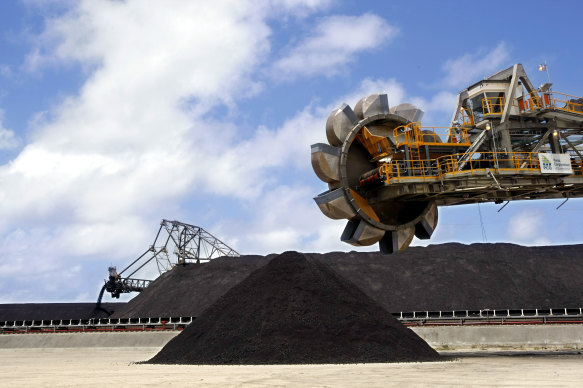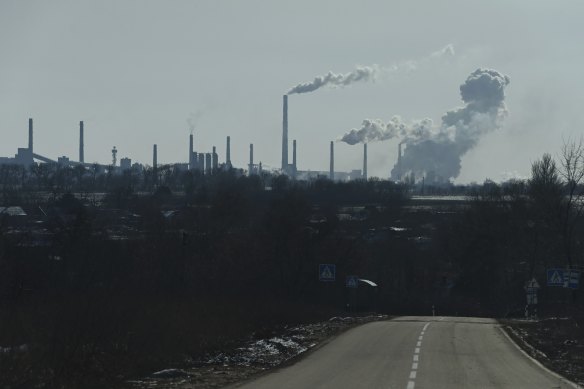This was published 3 years ago
Australia promised coal to Ukraine but has no plan for how to get it there
Australia has promised to send 70,000 tonnes of coal to Ukraine but there’s currently no ship contracted to send the coal from Newcastle to the war zone, and none suitable to be commandeered to ship the fuel.
The shipping sector says this is a sign of the dire straits the industry is in, as there are only 13 Australian-flagged vessels – the only ships the government can legally commandeer – left in operation.

Australia has promised 70,000 tonnes of coal to Ukraine, but has no firm plan to get it there.Credit: Glenn Hunt
Prime Minister Scott Morrison announced on Sunday the thermal coal shipment, worth about $28 million, would be sent as soon as possible after a request from the Ukrainian leadership. The government has agreed with Whitehaven Coal that taxpayers will cover the costs of the coal and shipping.
The mining company and the government are reluctant to reveal detailed plans about the transportation of the coal for security reasons.
However, The Sydney Morning Herald and The Age can reveal the government does not yet know how it will get the shipment to a power station in Ukraine.
The Russian invasion of Ukraine has led to an energy crisis across Europe as well as in the war zone.

The Avdiyivka coke plant in Ukraine, which included a power plant supplying heat to the city, that was hit by rockets. Credit: Kate Geraghty
Resources Minister Keith Pitt said Australia had responded swiftly to the request for help to keep power flowing in Ukraine.
“Logistics around the supply and delivery of the coal is still being determined involving consultations with all parties involved,” he said.
“The Australian coal industry delivers coal around the world every day and this shipment will reach its destination to assist the people of Ukraine in their time of need.”
Maritime Industry Australia Limited (MIAL) head Teresa Lloyd says there would be very high insurance costs for any ship contracted on the open market to send to Ukraine. However, if there was a suitable Australian-flagged vessel, the government could effectively requisition and underwrite it to make the journey.
Whitehaven said in a statement on Sunday the company was working closely with the government and Tragifura, one of its key supply chain partners, “to ensure the prompt delivery of the cargo”.
Rory Simington, the principal thermal coal analyst for consultants Wood Mackenzie, said the involvement of Trafigura would likely mean they already had or would be able to get a slot at the ports at each end to load the coal.
“You can usually get a vessel on fairly short notice because there’s a lot of vessels sailing everywhere. So it’s more the availability of the coal and then at the other end, probably the bigger issue is the logistics from Poland through to Ukraine,” he said.
The 70,000 tonnes is equivalent to one Panamax-class vessel or about half a Capesized ship – the largest type of dry cargo carrier.
However, there aren’t any of these among Australia’s local shipping fleet, which is down to just 13 registered vessels, consisting of four LNG carriers, three cement vessels and six ships that operate in the Bass Strait, including the two Spirit of Tasmania vessels.
MIAL, which represents the owners of commercial vessels, has been pushing the government to make regulatory changes and cut taxes to stop the decline of the locally registered shipping industry.
Ms Lloyd said the benefit to the government of having more ships registered in Australia is it would have more powers to direct them, for example, to help during a natural disaster.
“If there was a crisis of whatever kind that actually meant ships were taken out of circulation or told not to come to Australia, we would actually have some of our own that we could direct to our service,” she said.
It would also create better security for Australia, such as in fuel supply. Currently, oil is brought to Australia from the US on ships carrying the flag of other nations. That means the governments of those countries could send them elsewhere if there was a crisis even though the oil was contracted to Australia.
Labor announced in January if it won the coming election it would examine the best way to create a sovereign shipping fleet that could be called upon in times of national crisis.
Fascinating answers to perplexing questions delivered to your inbox every week. Sign up to get our new Explainer newsletter here.